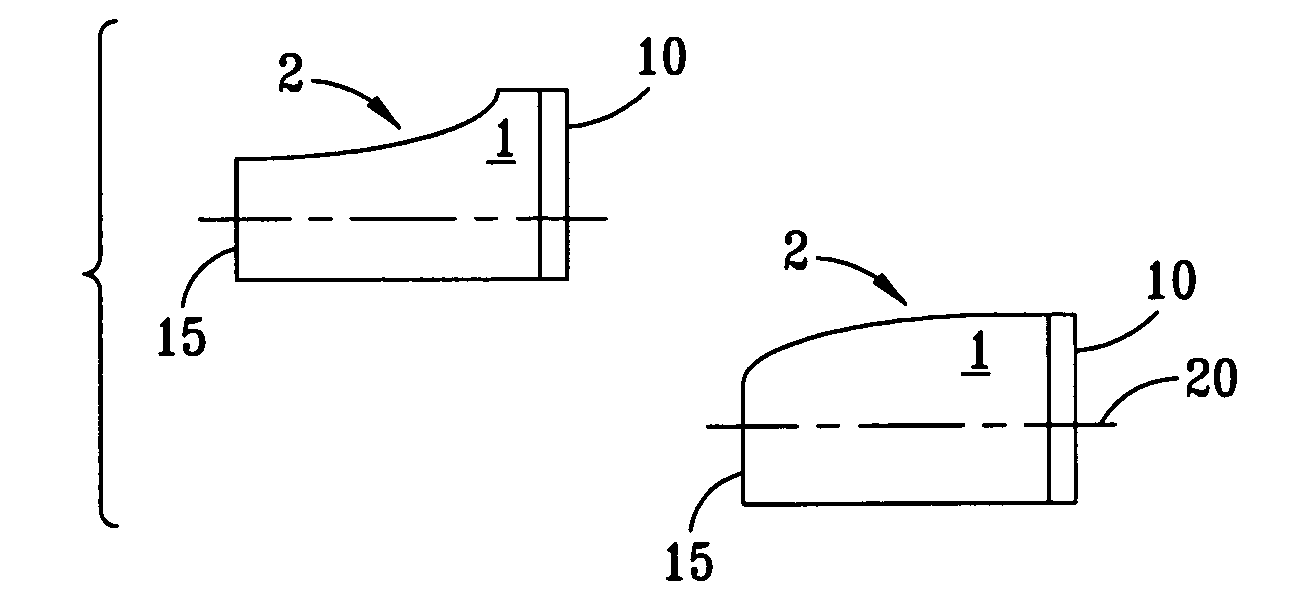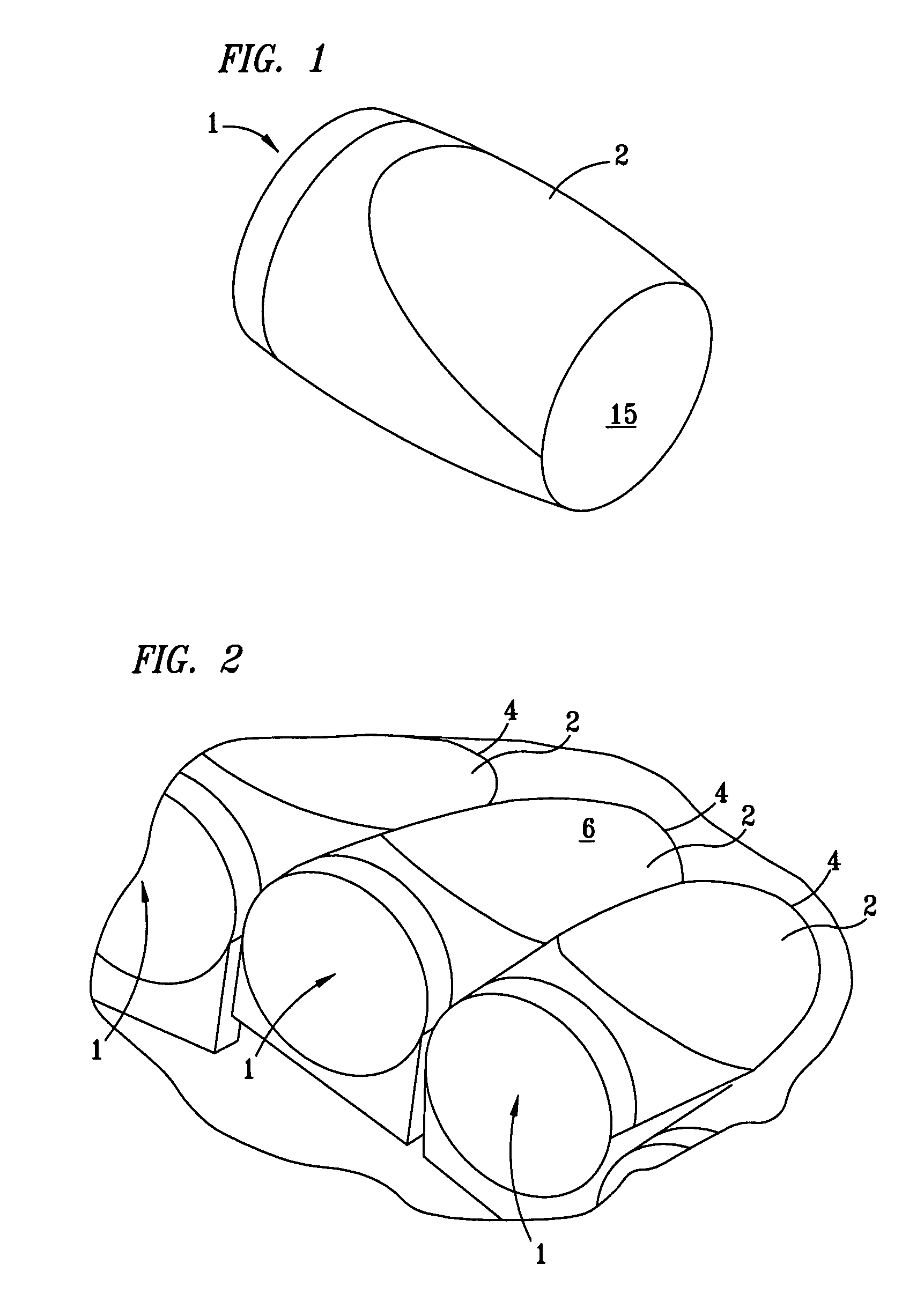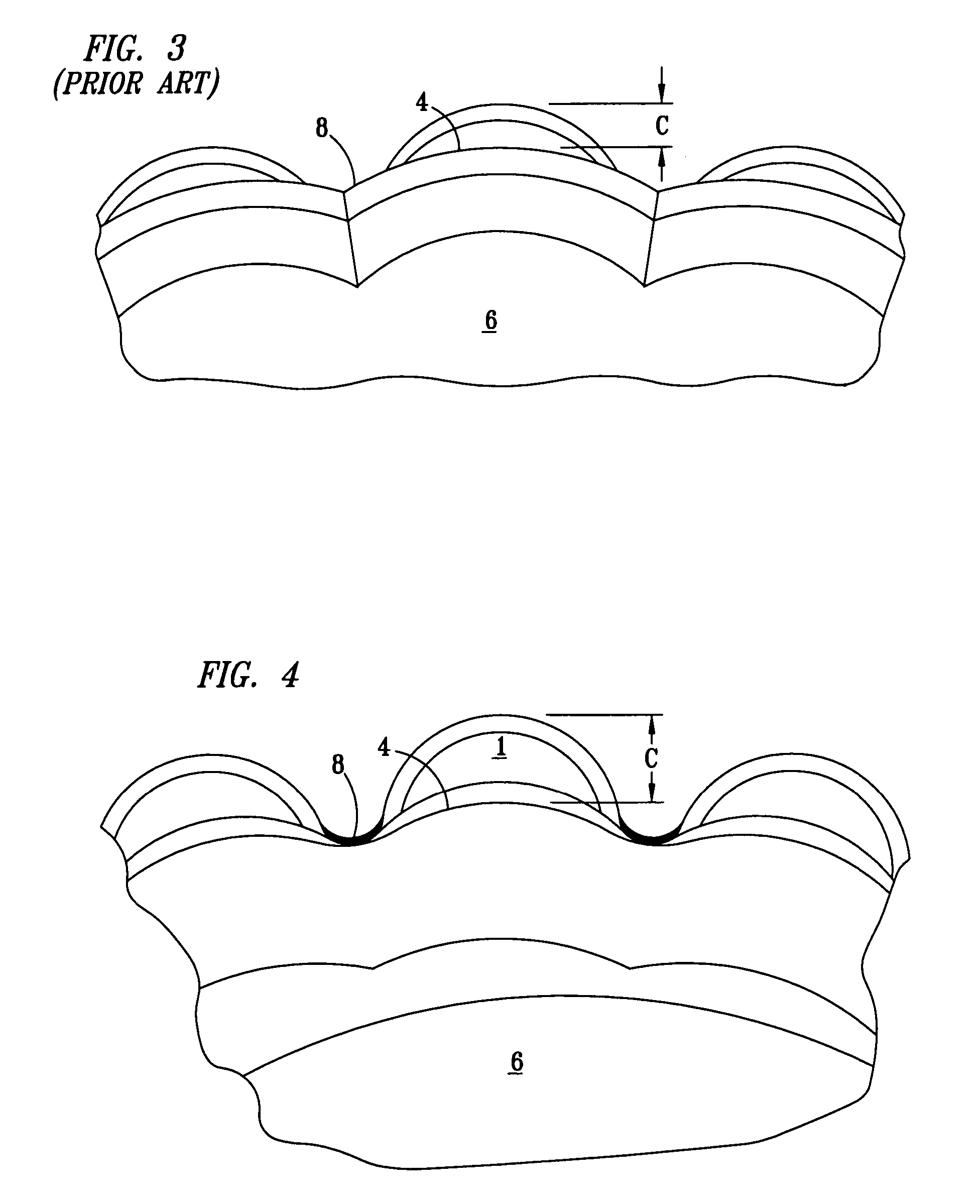Cutting element with improved cutter to blade transition
a cutting element and transition technology, applied in cutting machines, drilling accessories, construction, etc., can solve the problems of affecting the drilling budget, tripping out the borehole is a time-consuming and laborious endeavor, and all drill bit teeth can be expected to fail eventually, so as to improve the transition
- Summary
- Abstract
- Description
- Claims
- Application Information
AI Technical Summary
Benefits of technology
Problems solved by technology
Method used
Image
Examples
Embodiment Construction
[0029]FIGS. 1 and 2 show improved cutter geometry according to an embodiment of the invention. This geometry maximizes cutter clearance and lessens the amount of formation contacting the bit body between the cutters. Less contact between the formation and bit body results in increased longevity for a drill bit. This is achieved by using a shape for a cutting element in which a generally cylindrical cutting element has a slanted top 2 for blending into the surrounding cutter blade 6. Such a configuration will be hereinafter referred to as a slanted cutter 1.
[0030]Top and bottom surfaces of cutters disclosed herein are defined with respect to the drill bit body in which they are or will be mounted, with the bottom surface being that which is closest to, or embedded in, the blade 6, and the top being that surface which is closest to a predicted location of the formation in which the drill bit is disposed. The back end 15 of the slanted cutter 1 will generally be disposed within a recei...
PUM
| Property | Measurement | Unit |
|---|---|---|
| angle | aaaaa | aaaaa |
| angle | aaaaa | aaaaa |
| angle | aaaaa | aaaaa |
Abstract
Description
Claims
Application Information
 Login to View More
Login to View More - R&D
- Intellectual Property
- Life Sciences
- Materials
- Tech Scout
- Unparalleled Data Quality
- Higher Quality Content
- 60% Fewer Hallucinations
Browse by: Latest US Patents, China's latest patents, Technical Efficacy Thesaurus, Application Domain, Technology Topic, Popular Technical Reports.
© 2025 PatSnap. All rights reserved.Legal|Privacy policy|Modern Slavery Act Transparency Statement|Sitemap|About US| Contact US: help@patsnap.com



